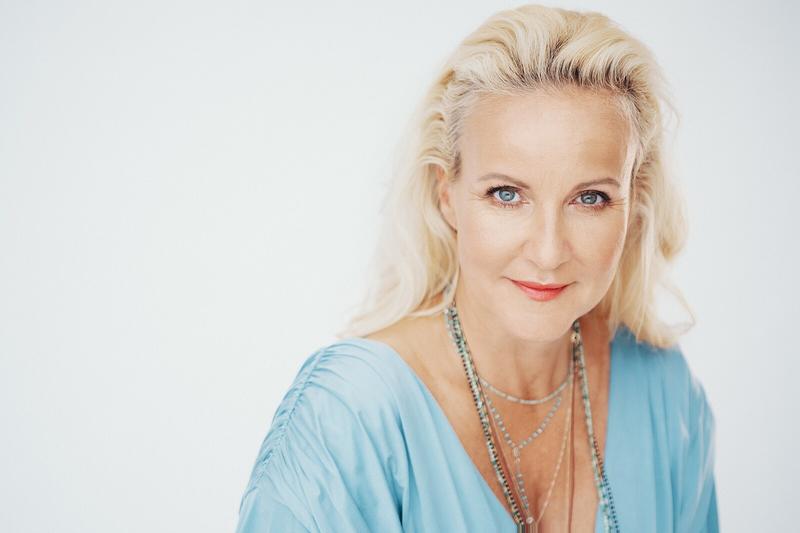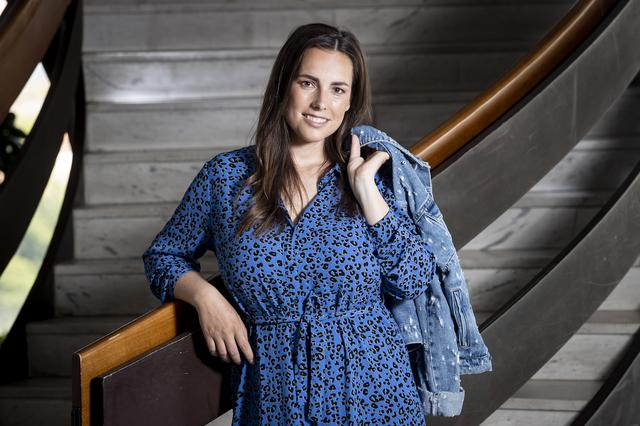Jäger frost crushers and corsets. Comfort was on the sidelines, the museum shows<
The new exhibition maps the development of underwear from the last third of the 19th century until the 1970s. He will show what it meant to be attractive, for example in the Baroque period or during the socialist Czechoslovakia, when nylon overalls, pointed bras were in vogue, and "Living Flowers" led from perfumes.
The impetus for the exhibition was a unique collection of clothes from the turn of the 19th and 20th centuries, which the Pelhřimov Museum acquired some time ago.
"It is linen that the original owner prepared for the equipment, but she never used it again. During the First World War, fashion and, in fact, the whole lifestyle changed very significantly. Women began to live completely differently, and fashion changed hand in hand with that. Nobody has ever worn those clothes, "recalls the exhibition curator Markéta Skořepová.
The ideal waist circumference was 50 centimeters or less
One of the most controversial parts of women's underwear was the corset. Often reinforced with bones or steel bars. A wasp waist was supposed to be achieved by lacing it around the body.
Photo galleryView photo gallery |
"There were times when the ideal waist circumference was 50 centimeters or less. Today we cannot even imagine something like that. We were not able to wear a single XS-sized mannequin in the corset, "recalls Skořepová.
In Rococo times, the corsets only reached the waist and the lower abdomen was loose. During the Art Nouveau period, the corset extended beyond the hips and completely tightened the entire hull.
"Wearing a corset mainly concerned the upper classes. Working women could not afford it. In addition, he prevented movement and his lacing required a maid. It was even said that the cavalier could lace up his mistress after the meeting so that the chambermaid would not know anything, "recall the authors of the exhibition.
At the turn of the 19th and 20th centuries, voices grew stronger, calling for the removal of harmful lacing.

"The side effect was frequent fainting, shortness of breath and permanent deformity of internal organs. Tightened corsets bothered not only doctors, but also feminists who claimed that a woman should be charmed mainly by the spirit. In the end, the corset definitely disappeared in the First World War, "explains the curator of the exhibition.
The basic purpose of underpants? Most of all, they had to warm up
Then it was a step towards the bras. At first they were a symbol of progress and emancipation, later feminists completely rejected them in the 60's and 70's and publicly burned them in protest.
The first underpants began to be sewn in the second half of the 19th century. "They were supposed to cover the knees and thighs, but they lacked a center seam. So they warmed, they slept, but the hygienic effect was zero. They were used under crinoline dresses made of light metal construction, "recalls Skořepová.
Until then, the basic type of underwear for men and women was a T-shaped shirt. The women complemented the shirt with a petticoat - a skirt that supported and complemented the outer dress. At the exhibition, you can see, for example, a petticoat interwoven with horsehair, which reinforced the fabric.
According to Skořepová, clothing similar to today's men's briefs is known from the Renaissance period and was worn in a spa. The men protected themselves from the cold with stockings, which, like women, fastened their garters. Gustav Jäger's woolen medical clothes became a legend. The London company, which before the end of the 19th century became famous for "Jäger's frost crushers", ie warm underpants, still produces them today.
Beware of rude thoughts. The women were to soap over their shirts
Hygiene and regular baths have not been much cared for in the past. Until the middle of the 18th century, medical science did not consider washing and soaking the body as healthy. It loosened the pores and deprived the body of its natural protective layer. The turning point came with the Enlightenment and its fight against dirt and smell.
"Even so, the bath was considered something exhausting, and the bathroom used to be a sofa. Due to lower water consumption, sofas were initially preferred. Portable porcelain or tin sinks and a watering can were used to wash hands and face. For a long time, only rinsing with rose water was used for oral hygiene, later bleaching powders were added, “readers of the Pelhřimov exhibition will read.
"The very contact with the naked body provoked controversy at the beginning of the 19th century. He should have evoked obscene thoughts. Especially young girls should have their eyes closed when bathing and prefer to soap over their shirts, "inform the curators.
The lack of hygiene was compensated by the use of strong perfumes. At the end of the 18th century, scents like amber, musk, were in vogue. They were not applied directly to the body, but were filled with pieces of clothing, such as gloves.
The girls also proved their girls' honesty when washing
Washing hair was not popular either. The grease of unwashed hair was also one of the reasons why braided braids were hidden under a cap for the night. There was a risk of pillows getting dirty.
Are you interested in what is happening in the regions?
For the price of one edition, you get all the regional supplements.
Women at this time also had to find solutions to maintain basic hygiene during menstruation. Home-made textile inserts were tied around the hips and only after the First World War were they replaced by industrially produced cotton products.
"By the way - regular washing of characteristically soiled laundry in front of neighbors in the countryside has long served as proof of girls' honesty," the curator points out.
As the period posters at the exhibition show, even at the beginning of the 20th century, the ladies were subject to fashion trends and guaranteed products that would make them more beautiful and attractive. One of the period advertisements, for example, attracts the purchase of Oriental pills. Within two months of use, they were supposed to guarantee "breast development and firmness".
The exhibition of historical underwear will be on view in the Pelhřimov Museum of the Vysočina Region until 3 September.


 Tags:
Tags: Prev
Prev







